
The River Hamble in south Hampshire, England, rises near Bishop's Waltham and flows for 10.1 km (6.3 mi) through Botley, Bursledon, and Lower Swanwick before entering Southampton Water between Hamble Common and Warsash.

Wickham is a village in the civil parish of Wickham and Knowle, in the Winchester district, in the county of Hampshire, England. It is about 3 miles north of Fareham. In 2021 it had a population of 2173. At the 2001 census, it the parish a population of 4,816, falling to 4,299 at the 2011 Census.

Bishop's Waltham is a medieval market town situated at the source of the River Hamble in Hampshire, England. It has a foot in the South Downs National Park and is located at the midpoint of a long-established route between Winchester and Portsmouth. It is home to the ruins of Bishop's Waltham Palace, a Scheduled Ancient Monument under English Heritage management, and a well-preserved high street with many listed buildings which now house independent shops.
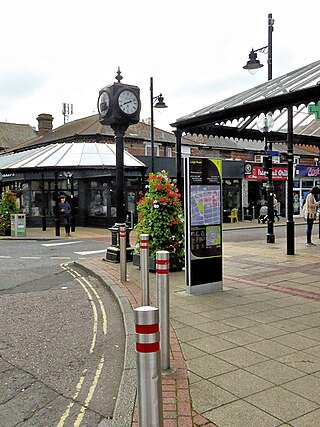
The Borough of Eastleigh is a local government district with borough status in Hampshire, England. It is named after its main town of Eastleigh, where the council is based. The borough also contains the town of Hedge End along with several villages, many of which form part of the South Hampshire urban area.

Hamble-le-Rice, commonly known as Hamble, is a village and civil parish in the Borough of Eastleigh in Hampshire, England. It is best known for being a flying training centre during the Second World War and is a popular yachting location. The village and the River Hamble also featured in the 1980s BBC television series Howards' Way. The village centre, known as The Square, Hamble, has a more traditional English village aesthetic which differentiates it from the small industrial areas close to the village.
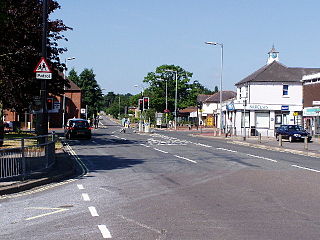
Hedge End is a town and civil parish in Hampshire, England. Situated to the east of the City of Southampton, it adjoins the districts of West End and Botley. Hedge End lies within the Borough of Eastleigh and is part of the Southampton Urban Area. The original hamlet developed on Botley Common after 1250 when it was granted to the men of Botley as common pasture. In 1267, royal charters allowed Botley to hold an annual fair and a weekly market on the common which eventually became a market town.

The West Coastway line is a railway line in England linking the conurbations of Brighton/Hove/Littlehampton and Southampton/Portsmouth, with 1.3 million people between them. It has short southward branches to Littlehampton and Bognor Regis, which offer direct services to and from London.
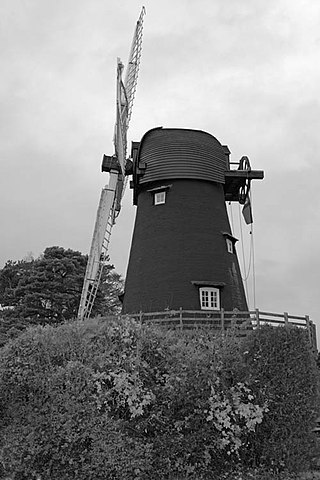
Bursledon is a village on the River Hamble in Hampshire, England. It is located within the borough of Eastleigh. Close to the city of Southampton, Bursledon has a railway station, a marina, dockyards and the Bursledon Windmill. Nearby villages include Swanwick, Hamble-le-Rice, Netley and Sarisbury Green.

Warsash is a village in southern Hampshire, England, situated at the mouth of the River Hamble, west of the area known as Locks Heath and south of Sarisbury. Boating plays an important part in the village's economy, and the village has a sailing club. It is also home to the Warsash Maritime Academy, part of Southampton Solent University, which provides training for Merchant Navy Officers from around the world.

Eastleigh is a constituency represented in the House of Commons of the UK Parliament since 2024 by Liz Jarvis, a Liberal Democrat.

Bitterne is an eastern suburb and ward of Southampton, in the ceremonial county of Hampshire, England.

North Baddesley is a large village and civil parish in Hampshire, England. It is situated 3 mi (5 km) east of the town of Romsey and 6 mi (10 km) north of Southampton. It occupies an area of approximately 9.15 km2 (3.53 sq mi), and is home to a population of just over 10,000 people, reducing to 7,000 at the 2011 Census. It is located in the Test Valley; a river famous for trout fishing.

Bursledon Windmill is a Grade II* listed windmill in Bursledon, Hampshire, England which has been restored to working order.
The Southampton–Fareham line is a railway line in England, along the south coast of Hampshire. As a through line it came late in British Railway history, traversing unpromising coastal terrain. The first part from Portswood, near Southampton, to Netley was opened in 1866, prompted by the establishment of the Royal Victoria Hospital at Netley, which had been established for the care of wounded soldiers.
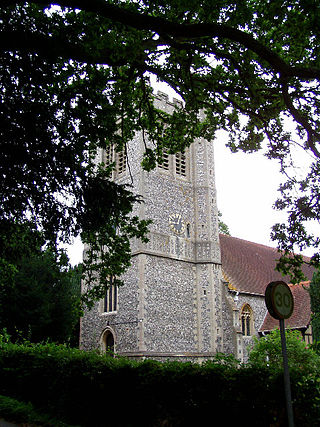
Curdridge is a village and civil parish within the City of Winchester district of Hampshire, England. The parish also contains the similarly named village of Curbridge. The village has a small school. The parish is located eight miles to the east of Southampton and had a population of 1,292 people in 473 households in the 2001 census, the population increasing to 1,398 in 520 households at the 2011 Census. Curdridge is also known for its annual Curdridge Country Show that takes place in a field off Reading Room Lane

River Hamble Country Park is a 144.1-hectare (356-acre) country park which runs along the west bank of the River Hamble between the villages of Botley and Bursledon in Hampshire. It is owned by Hampshire County Council and managed by Hampshire Countryside Service.

Peartree Green is an open space on high ground on the east bank of the River Itchen in Southampton. A 16/17th century building, Peartree House, still stands, though is today concealed by private housing. The house and the green take their name from a pear tree that grew near the parish church. Some of the original open space has been built on, but a large proportion remains as a recreational area. It contains a church and the remains of a boarding school. It overlooks the River Itchen to St Mary's Church in Southampton.

South Stoneham was a manor in South Stoneham parish. It was also a hundred, Poor law union, sanitary district then rural district covering a larger area of south Hampshire, England close to Southampton. In 1911 the parish had a population of 1934.
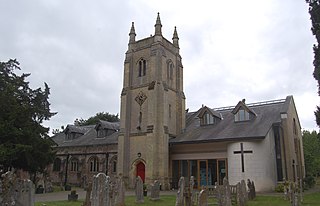
All Saints, Botley is an Anglican church in the centre of the village of Botley, Hampshire in southern England. Built in the 1830s to replace a church, St Bartholomew's, south of the village, it was expanded in 1859 and the 1890s. Further expansion followed in 1967 and in the early 2000s. Described as "an uninteresting specimen of its time", it is a Grade II* listed building.





















